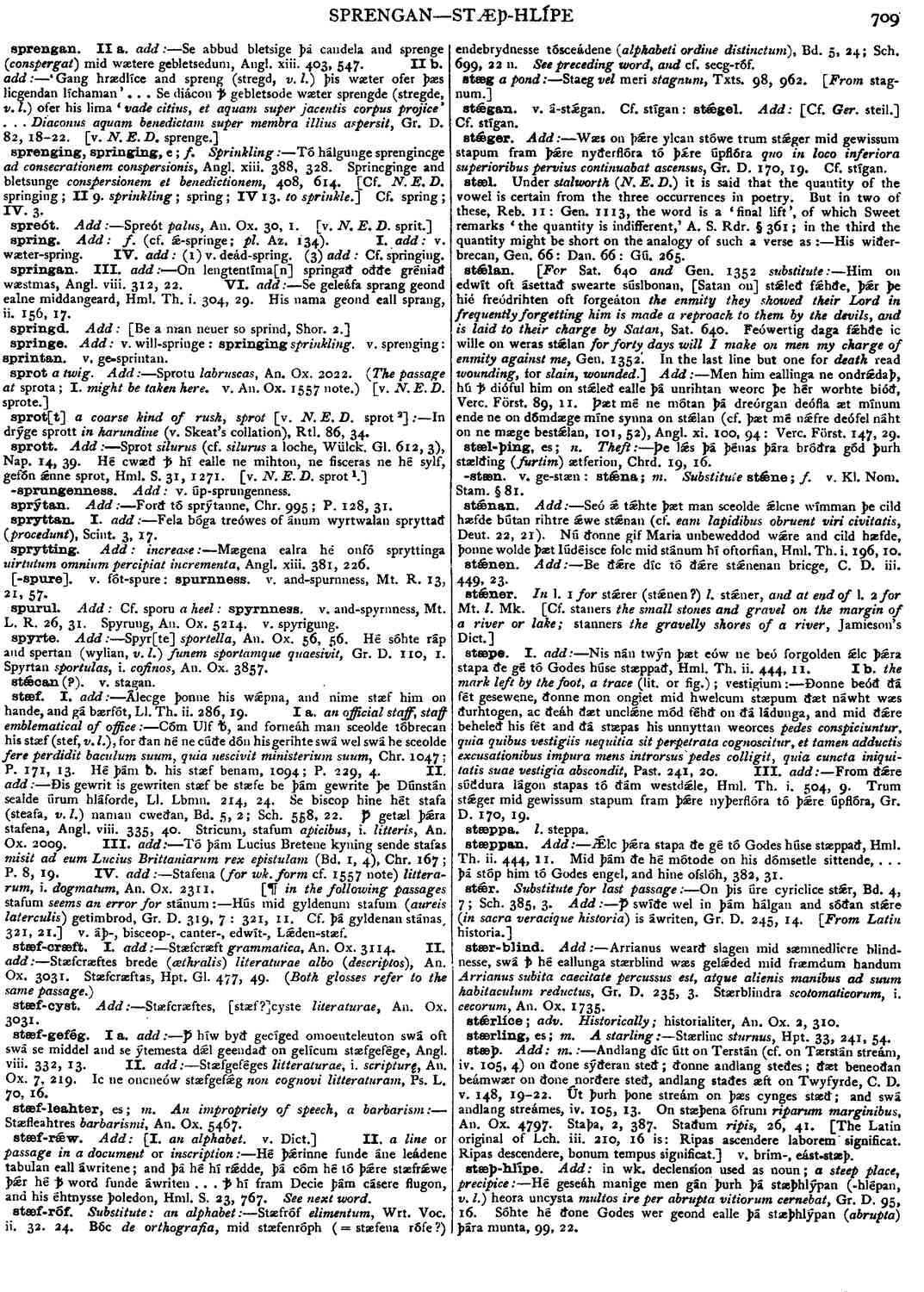stæf
-
Álecge þonne his wǽpna, and nime stæf him on hande, and gá bærfót, Ll. Th. ii. 286, 19. I a. an official staff, staff emblematical of office :-- Cóm ƀ and forneáh man sceolde tóbrecan his stæf (stef, v. l.), for ðan hé ne cúðe dón his gerihte swá wel swá hé sceolde
fere perdidit baculum suum, quia nescivit ministerium suum, Chr.
- 1047; P. 171, 13.
-
Hé þám ƀ his stæf benam,
- 1094; P. 229, 4.
-
Ðis gewrit is gewriten stæf be stæfe be þám gewrite þe Dúnstán sealde úrum hláforde,
- Ll. Lbmn. 214, 24.
-
Se biscop hine hét (steafa,
v. l.
) naman cweðan,- Bd. 5, 2; Sch. 558, 22.
-
Ꝥ getæl þǽra stafena,
- Angl. viii. 335, 40.
-
Stricum, stafum
apicibus, i. litteris,
- An. Ox. 2009.
-
Tó þám Lucius Bretene kyning sende stafas
misit ad eum Lucius Brittaniarum rex epistulam
(Bd.- 1, 4), Chr. 167; P. 8, 19.
-
Stafena
(for wk. form cf. 1557 note) litterarum, i. dogmatum,
- An. Ox. 2311.
-
Hús mid gyldenum stafum
(aureis laterculis)
getimbrod,- Gr. D. 319, 7: 321, 11.
Cf. þá gyldenan stánas, 321, 21.]
Bosworth, Joseph. “stæf.” In An Anglo-Saxon Dictionary Online, edited by Thomas Northcote Toller, Christ Sean, and Ondřej Tichy. Prague: Faculty of Arts, Charles University, 2014. https://bosworthtoller.com/58426.
Checked: 0